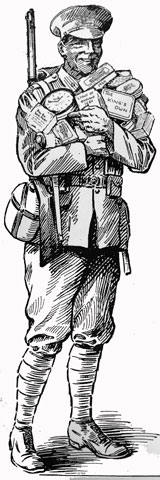 |
King's Own Royal Regiment Museum Lancaster |
|||||||||||||||
|
HOME Museum & Collections Soldiers of the Regiment Sales Donations Events Contact Us REGIMENTAL HISTORY 17th Century 18th Century 19th Century 20th Century First World War Second World War Actions & Movements Battle Honours FAMILY HISTORY Resources Further Reading PHOTO GALLERY ENQUIRIES FURTHER READING LINKS |
Collections - Medals The museum collection contains many hundreds of medals awarded to soldiers of the regiment. Our earliest medals are commemorative medals and record events such as the Battle of Culloden in 1746 and the Duke of Cumberland. We have examples of the first campaign medal awarded to all ranks - the Waterloo Medal for the battle which defeated the French Emperor Napoleon in 1815. Our collection also contains Regimental Medals produced at the time of the Peninsular Wars to award soldiers for their gallantry and courage. The museum's collection:
Medals are divided into those awarded for Campaign or War service, for long and meritorious service and those awarded for gallantry. Gallantry medals include the Victoria Cross the highest award for gallantry. The museum displays the five Victoria Crosses in the collection. Other gallantry awards are: Distinguished Service Order (DSO); Military Cross (MC); Distinguished Conduct Medal (DCM) and the Military Medal (MM). Campaign Medals in the collection including the Military General Service Medal for the Peninsular Campaigns (circa 1806-1814); Waterloo Medal; Crimean War Medal (1854-56); Turkish Crimean Medal; Indian Mutiny Medal (1857); Abyssinian Medal (1868); South African War Medal - or Zulu War Medal - (1879); Queen's South Africa and King's South Africa Medal (1899-1902); 1914 Star and 1914-15 Star, British War Medal and Allied Victory Medal of the First World War (1918-1918); General Service Medal (1918-1962); Second World War 'Stars' including 1939-45 Star, Africa Star, Italy Star, Burma Star, France and Germany Star and the War and Defence Medals. The Silver War Badge was awarded to soldiers discharged due to wounds or sickness in the First World War. The collection includes medals award for long and efficient service for both regular and volunteer soldiers - including Long Service and Good Conduct Medals and the Territorial Force Efficiency Medals. The museum also holds some Orders - such as those awarded in the 'New Year Honours' and the Monarch's 'Birthday Honours' such as the Order of the British Empire (OBE). Some of these orders are represented as medals but others are badges worn around the neck or worn on the chest of uniform. Various Orders are divided between Civilian and Military Divisions - so a soldier would be awarded the OBE of the Military Division - a slightly different award to those awarded to civilians. Miniature medals can also be found in the collection - these are designed to be worn on 'Mess Uniform' for regimental dinners and social functions. They are exact copies of their full size counterparts. Medal collecting has for over one hundred years been a popular pastime. Medals can range in value from a few pounds to many thousands. Victoria Crosses are now sold for six figure sums! Part of the fun of the collecting is search out information on the soldier to whom the medals were awarded. Most medals issued, although none for the Second World War, were named with the soldiers name, rank and number and often the regiment. The name usually appears around the rim, however the details appear on the rear of the Abyssinian Medal from 1868 - making it one of the most expensive medals ever to mint! The King's Own were present in Abyssinia and we have a number of such medals on display.
Only a proportion of our collections are on display at anyone time. Certain items are on loan for display in other institutions. An appointment is required to consult any of our collections which are held in store. |

